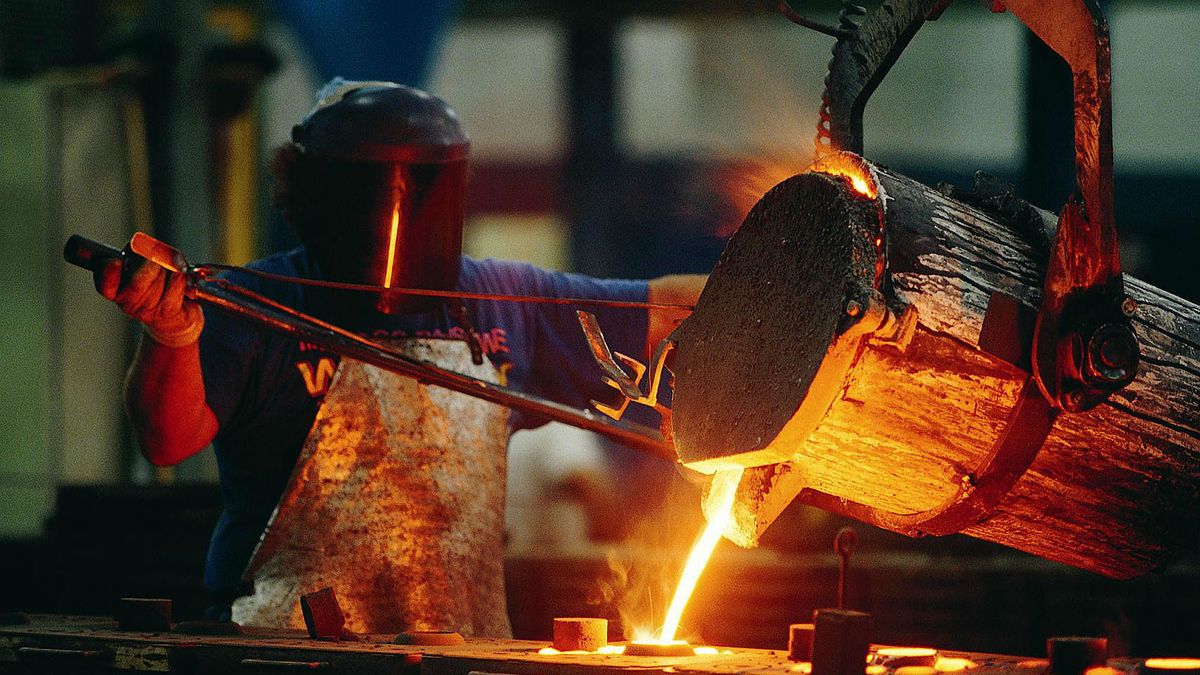According to the report, in 2016 Argentina’s GDP was around 2 kg per inhabitant. A “relatively low” number, if one considers that in 2012 this indicator was around 3.5 kg/inhabitant and that in the 1970s it was 14kg/inhabitant. Towards the end of the year the updated figures will be known, but it is estimated that it would be located at similar levels to those of 2016.
The report highlights, in this context, that the average global GDP in 2016 was around 14kg/inhabitant and that Germany is the country with the highest indicator: 65 kg/inhab. “The data is not surprising and shows that the development of the European nation has a solid base in its industry and, beyond globalization and its rules, it has managed to maintain the capacity and competitiveness of its metallurgical industry from its bases within its borders,” the study stressed, adding: “It is not surprising that the countries with the largest GDPs are developed or developing countries, with a robust growth of its economy for decades”. In Latin America, countries with a certain industrial level, such as Brazil and Mexico, have 7 times higher GDP than Argentina, the document added.
The level of PBIF determines, to a large extent, the degree of local integration of the metalworking industryca, that is, the internal supply that –in this case- the industrial sector has. An It is highly possible for a country with a low GDPF to have a low level of industrial integration and lose, downstream and upstream, the possibility of adding value.r in the different stages of the production process.
In this framework, the study analyzes, by way of example, how is the evolution of the GDP per capita of the countries with the highest GDP, to measure “the robustness and growth or stagnation of an economy and see its correlate or industrial effect”. In this sense, it was highlighted that “Germany, first in PBIF, had the second highest GDP per capita”. “It can be said that the level of its GDP, its exports (it is the third largest exporter in the world below China and the USA), its level of industrialization (industry represents 30% of its GDP) and its level of development are supported by an industry that is based on solid foundations, given its high level of PBIF. The case of Japan is similar to that of Germany.”, highlighted the report.
Look
The report was carried out by a multidisciplinary team made up of a strong component of INTI specialists from different industrial regions of the country, technically coordinated by Ing. Daniel Martínez Krahmer. As he explained to Area Juan Manuel LabancaINTI economist and one of the authors, the idea of creating this indicator arose when considering the foundry sector “as a strategic link throughout the metal-mechanic chain. A chain that, according to ADIMRA estimates, represents around 250,000 direct jobs.
In this sense, as explained by Labanca, one of the essential objectives of the study was to demonstrate that, “If there is no foundry, many jobs are at risk”. “Upstream and downstream, many links that we identified are lost. And there we began to think about this indicator, ”she highlighted.
When analyzing the importance of the foundry sector and the objective of the study, the specialist remarked: “We made a cross between the countries that produce cars and, within that ‘exclusive’ club, Argentina is one of the least integrated. And it is the one that melts the least per capita. The second thing we saw had to do with the industry itself: there are countries that are highly industrialized and have a high level of foundry. And others that were closing and have a lower level. To know how the industry of a country is doing, this indicator is useful. Give an approximation. In this framework, it is what is going to be seen in these crosses, which give a certain representativeness or relevance to the indicator. That it is a sector that, because it is small, is not usually given importance. But we believe that if we could melt more, we would have more industry”.
Finally, when analyzing what depends on a country (in this case, Argentina) being able to melt more, Labanca pointed out: “Actually, it’s a bit of everything. For example, in parallel, we are working on a supplier development program for the shipbuilding industry, which has many peculiarities. Suddenly, when a survey is made, it is seen that Argentina imports chains and anchors. Purchases of low design and complexity, but today they are not produced here. And they could be done, especially considering that dollars are lacking and having a foundry with some idle capacity”.
“The sector supplies agricultural machinery. There is a lot of national integration there. But not in the automobile industry, in the railways there is little national integration. There are sectors that are strategic for the country, which could be supplied in part in Argentina, and they are not being able to”, he stressed.
“We think that, in order to diversify the markets of potential suppliers from different strategic sectors, they should be consider through its productive capacities, that is, for example, an oil and gas supplier can adapt part of its production lines to also supply other sectors“, he pointed.
According to the INTI specialist, the work made it possible to give greater visibility to the foundry sector and that, with the last change of government, a specific line for the sector was opened from PRODEPRO (Supplier Development Program) and work was carried out “very articulated” with the Ministry of Productive Development.
“The INTI, by developing indicators of industrial production that allow establishing some level of objective comparabilityprovides the State with a necessary tool for the implementation of adequate and effective public policies”, states the study, which adds: “In this way, estimating the smelter per capita makes sense since it can serve, among other things, to measure the industrial gap that Argentina has in relation to those countries with which, for various reasons, it is valid to compare it”.
Source: Ambito
David William is a talented author who has made a name for himself in the world of writing. He is a professional author who writes on a wide range of topics, from general interest to opinion news. David is currently working as a writer at 24 hours worlds where he brings his unique perspective and in-depth research to his articles, making them both informative and engaging.




